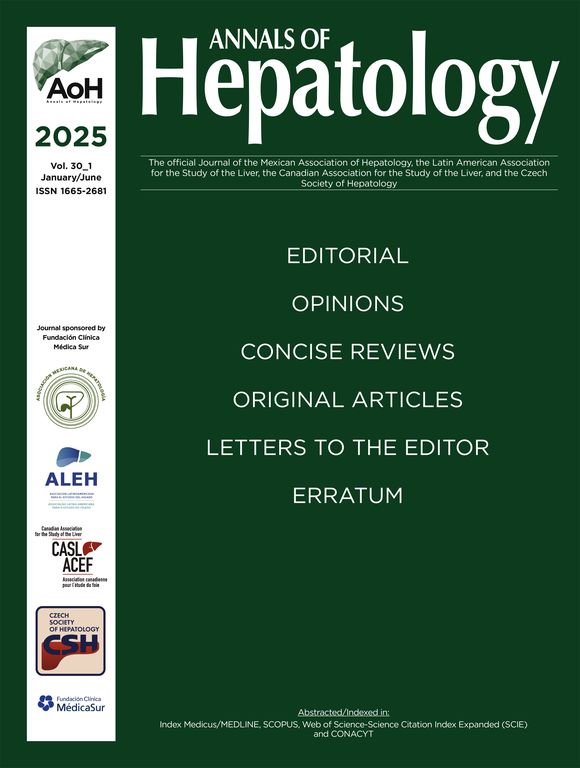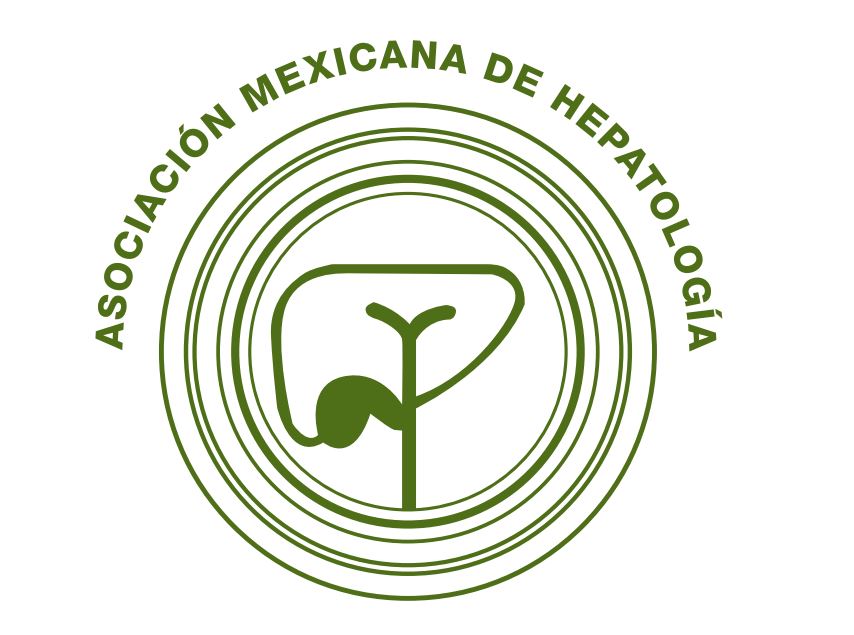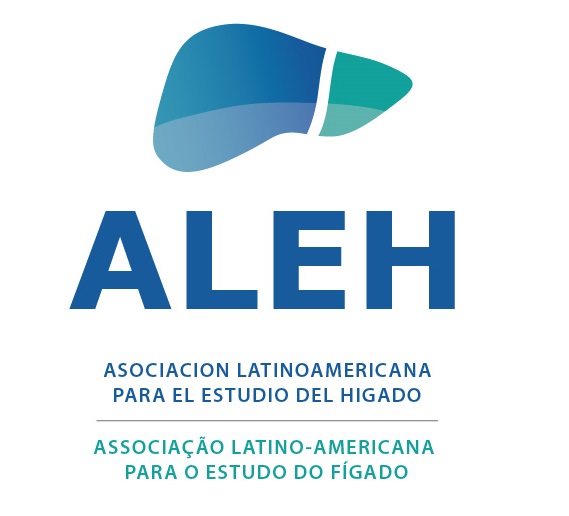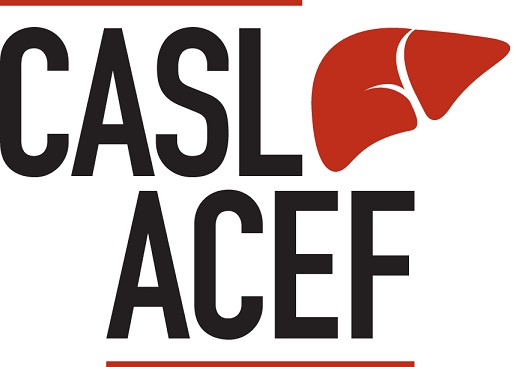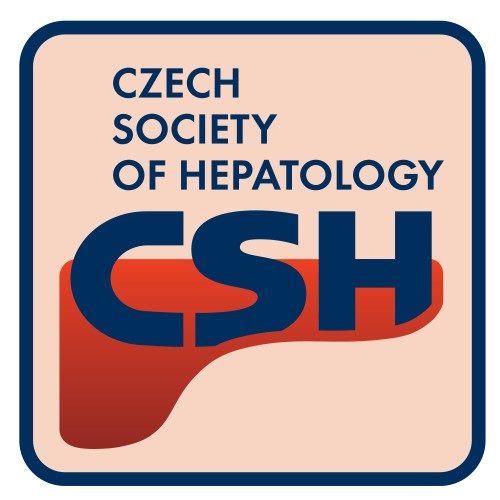Acute kidney injury (AKI) is a common complication of orthotopic liver transplantation (OLT). This study aimed to identify factors associated with persistent AKI (pAKI) and to develop a risk index. The impact of pAKI on mortality and renal function over a 5-year period was also assessed.
Materials and MethodsIn this retrospective cohort study, adult OLT recipients were included. pAKI was defined as AKI lasting >72 hours. Logistic regression identified pAKI-associated factors, which were used to create a risk index. Long-term renal function was then evaluated.
ResultsAmong 305 patients, 23 % developed pAKI. The median MELD (Model for End-stage Liver Disease) score was 17. Multivariate analysis identified male sex, reoperation, transfusion of >6 units of red blood cells, anhepatic time >50 minutes, and norepinephrine use >0.25 mcg/kg/min as significant risk factors. The risk index assigned 3 points each to male sex and norepinephrine use, and 5 points to the remaining factors. A score ≥11 had moderate performance (AUC 0.70) and a negative predictive value of 90 %. Patients with pAKI had longer ICU and hospital stays and higher in-hospital mortality. At 5 years, overall mortality did not differ significantly, but those with pAKI had a 10 ml/min/1.73m² lower eGFR.
ConclusionspAKI is a frequent OLT complication, negatively affecting short-term outcomes and long-term renal function. The proposed risk index effectively identifies patients at low risk, supporting targeted monitoring and prevention.
Orthotopic liver transplantation (OLT) is an effective therapeutic option for end-stage liver diseases. Even with improved results, higher survival rates and lower mortality observed over the last decades, this procedure is still associated with some complications, such as perioperative acute kidney injury (AKI). AKI post-OLT is considered a common complication, with an incidence rate reported as high as 40-70 % in some studies [1,2]. The underlying etiology is multifactorial and has not yet been fully elucidated.
Previous studies have found an association between several preoperative and perioperative variables and the development of the aforementioned complications. The main factors that have been identified include patient characteristics such as overweight and other comorbidities [2], preoperative diuretic use, operative technique, intraoperative hemodynamic instability, and postoperative care, including immunosuppressive therapy [3–6]. Furthermore, patients who develop this complication have worse short- and long-term outcomes, including longer intensive care unit (ICU) stay with prolonged mechanical ventilation [7], higher mortality, decreased graft survival, and adverse renal outcomes [1,4]. On the other hand, it has been estimated that in the long term, approximately 18-22 % of liver-transplant recipients develop chronic kidney disease (CKD) [8,9].
Thus, early identification of patients at a higher risk of developing AKI post-OLT is essential to establish prompt measures to improve the overall outcomes. Currently, there is no information available regarding the Latin American population; therefore, the relevance of our study is significant. This study aimed to identify the factors associated with the development of persistent AKI (pAKI) following OLT, and to develop an AKI risk index for this population. Furthermore, the impact of this complication on mortality and renal function over a 5-year follow-up period was analyzed.
2Materials and methodsA retrospective cohort study was conducted at the Instituto Nacional de Ciencias Médicas y Nutrición Salvador Zubirán in Mexico City.
The cohort comprised of all adult patients with end-stage liver disease (ESLD) who underwent cadaveric OLT between January 2008 and December 2018. Exclusion criteria included advanced chronic kidney disease (estimated glomerular filtration rate (eGFR) ≤30mL/min/1.73m2), prior kidney transplantation and AKI upon admission. Information including demographic data, comorbidities, previous pharmacological treatment, previous hospitalizations, and AKI events prior to OLT was collected from the electronic medical records system. In addition, data on surgical procedures, such as surgery time, anhepatic time, bleeding, fluid balance, diuresis, transfusions, use of nephrotoxic drugs, and vasopressors were collected. Subsequently, we performed bivariate and multivariate analyses with significant and clinically plausible variables to predict pAKI and assigned a risk score according to odds ratios. Finally, we analyzed the trajectory of the eGFR and compared the outcomes of the two study groups: patients who developed pAKI and those without this complication. All the data were obtained from clinical records.
2.1Variable definitionsAKI was defined and staged according to the KDIGO guidelines [10] using the serum creatinine (SCr) criteria, without registering urine output [10]. Patients were staged according to the highest degree of AKI attained during hospitalization. Baseline SCr was defined as the mean SCr value corresponding to 6 months before hospitalization or the minimum SCr value obtained during hospitalization if the previous values were not available [11]. pAKI was defined as AKI that persisted for more than 72 hours after OLT [12]. The Charlson Comorbidity Index [13] was calculated to integrate the information on comorbidities.
2.2Statistical analysisThe distribution of continuous variables was assessed using the Kolmogorov-Smirnov test. Descriptive statistics are expressed as numbers (percentages), and medians (interquartile ranges), as appropriate. The baseline patient characteristics of the two study groups were analyzed using the Mann-Whitney U-test. Chi-square or Fisher’s exact test was used for the categorical variables.
The factors associated with pAKI were evaluated using univariate logistic regression. All variables with a p-value <0.05 and all factors previously reported to be associated with pAKI were selected for the multivariate analysis. The use of antibiotics and antifungals was significant in the univariate analysis; however, they were not included in the multivariate model because they are collinear with the use of vasopressors (antibiotics were administered empirically to unstable patients) and transfusions/reoperations (these are criteria for prophylaxis of invasive fungal infections), respectively [14]. The surgical technique was not included in the analysis because the conventional technique used in our institution is total vascular exclusion. The cold ischemia time was not available in most cases. For the development of the pAKI risk index, variables that were significant in the multivariate analysis were considered, and a score was assigned to them according to the odds ratio obtained in the multivariate analysis. The final score was obtained by adding points for each risk factor to the patient. The renal trajectory was analyzed over a 5-year follow-up period after OLT, and the results are reported as eGFR according to the CKD-EPI formula [15].
For all variables, there were less than 1 % missing values, and for missing data, variables were attributed by using multiple imputations.
All statistical tests were two-sided, and a p-value below 0.05 was considered statistically significant. All analyses were performed using the Statistical Package for the Social Sciences 25.0 (IBM, Armonk, NY, USA).
2.3Ethical statementsThe study protocol complies with the ethical guidelines of the 1975 Declaration of Helsinki and was approved by your institution's ethics committee (NMM- 4660-23-23-1). Written informed consent was waived due to the retrospective nature of the study. The data obtained in the present study were collected from the electronic medical record.
3ResultsBetween January 2008 and December 2018, 332 patients underwent OLT. Of these, 305 patients met our inclusion criteria (Fig. S1). The baseline characteristics of all the included patients are shown in Table 1 and Table S1. The prevalence of AKI was 34 %, however the prevalence of persistent AKI was 23 %, of which 41 % was stage 1, 20 % stage 2, and 39 % stage 3. SCr levels both at baseline and at admission to the hospital for OLT were higher in patients who developed pAKI (p<0.01 for both variables, Table 1).
Clinical characteristics of patients included in this study.
Note. Continuous variables are expressed as median (interquartile range).
Abbreviations. MELD, Model for End stage Liver Disease; OLT, orthotopic liver transplant; AKI, acute kidney injury; SCr, serum creatinine; ICU, intensive care unit.
The factors associated with pAKI were analyzed using logistic regression (Table 2). Age, male sex, ascites drainage of >2500 mL during liver transplantation, reoperation, red blood cell transfusion >6 units during OLT, anhepatic time >50 minutes and perioperative use of norepinephrine (>0.25mcg/kg/min) were associated with the occurrence of pAKI as disclosed by univariate analysis. In the multivariate analysis, all variables remained significant, except for age and ascites drainage during OLT. These risk factors were used to create a risk score for pAKI in OLT.
Bivariate and multivariate logistic regression analysis for factors associated with pAKI post-OLT.
According to the risk variables obtained in the multivariate analysis and keeping the odds ratio as a score for the risk index, 3 points were assigned to male sex and use of perioperative norepinephrine, and the rest of the variables (reoperation, transfusion of >6 blood cell units, and anhepatic time >50 minutes) were awarded 5 points. The scores obtained for each variable were summed to obtain the final score. The best cutoff point was established at 11 points, with an area under the curve (AUC) of 0.70, sensitivity 74 %, specificity 66 %, negative predictive value 90 % and positive predictive value 40 %. According to this prediction index, the risk of developing pAKI with a score of <10 points was 10 %, between 11-14 points it was 26 % and with >15 points, the risk rose up to 54 % (Fig. 1).
3.3Outcomes associated with pAKI in OLT patientsTwenty patients (29 %) with pAKI required kidney replacement therapy (KRT), and 3 were dependent on hemodialysis at discharge. The KRT modalities used were intermittent hemodialysis in 11 (55 %) patients, continuous kidney replacement therapy in 5 (25 %), and prolonged intermittent renal replacement therapy in 4 (20 %).
The pAKI group had longer ICU and hospital stays, and higher SCr levels at discharge. During hospitalization, 11 patients died, of which 8 (73 %) belonged to the group of patients with pAKI and 3 to the group without pAKI (p = 0.001). The causes of death in patients with pAKI were sepsis in 63 % and coagulopathy in 37 %. At the 5-year follow-up, 29 patients died, with no difference between the two groups (Table 3).
Hospital outcomes and 5-year follow-up.
In the 5-year follow-up, the group of patients with pAKI had a 10 ml/min/1.73m2 decrease in eGFR compared to those without this complication (73 vs 83 ml/min/1.73m², p = 0.006, Fig. 2). 33 % of the patients with pAKI had an eGFR <60 ml/min/1.73 m2 at 5 years of follow-up.
4DiscussionIn the present study the prevalence of pAKI post-OLT was 23 %, of which 41 % was stage 1, 20 % stage 2, and 39 % stage 3. The incidence reported in the literature is highly variable, reaching up to 50 % in some cases, however different operational definitions have been used, and some of them include urine output, which was not used in this study [4,16,17]. For the purpose of this study, we used the definition of pAKI [12] because short- and long-term outcomes are worse with greater severity and duration of renal insult [18,19].
As previously mentioned, various perioperative factors are associated with the risk of developing AKI after OLT. In this study, by using regression models, we found that male sex, reoperation, transfusion of >6 red blood cell units, anhepatic time of >50 minutes, and use of perioperative norepinephrine (>0.25mcg/kg/min), were significantly associated to the development of pAKI. Previous studies have documented that female sex confers a higher risk of AKI despite the protective effects of estrogen in cardiovascular diseases [4,20]. In our study, male sex was a risk factor for developing pAKI; this has been attributed to androgens, particularly testosterone, which increase oxidative stress and target organ damage [4,17,21]. As expected, any event that compromises renal perfusion during surgery can trigger AKI post-OLT or worsen pre-existing AKI [22,23]. In a meta-analysis carried out by Zhou et al [6], intraoperative hypotension with a high vasopressor requirement and bleeding requiring transfusion were some of the factors associated with this outcome, which were also found to be significant in this study. Anhepatic or clamping time is a recognized intraoperative risk factor for the development of AKI post OLT. Several studies have reported that the longer the clamping time, the higher the risk of developing AKI [24,25]. This occurs because during anhepatic time, a series of hemodynamic changes take place, resulting in a decrease in the mean blood pressure, which in turn lowers renal perfusion [25]. In accordance with these hemodynamic changes, in our study, anhepatic time of >50 min was associated with a higher risk of developing persistent AKI.
Using the risk factors found in this study, which have been documented as factors for the development of AKI, we created a risk score with adequate discrimination in this population. Some studies have carried out risk models for AKI based predominantly on MELD, MELD-Na and Child-Pugh score with areas under the curve between 0.6-0.8, operative time and transfusion with increased risk of AKI by 60-70 % [26–28]. In this study, patients had high MELD scores and the majority corresponded to Child-Pugh C, except for those transplanted with hepatocellular carcinoma who were Child-Pugh A.
Twenty-nine percent of the patients with pAKI required KRT, and the modalities of KRT varied depending on the criteria for its initiation (hyperkalemia, hemodynamic instability, or fluid overload). In the literature, the incidence of KRT in this population is 10-15 % [17,29]; however, the characteristics of the population that require it are similar: unstable patients and high vasopressor requirements, with significant bleeding during the procedure, and higher previous MELD scores.
The development of pAKI was associated with longer ICU and hospital stays in general; similar results have been reported in other studies [1,30]. Interestingly, the impact on mortality in the pAKI group was greater during hospitalization; however, there were no differences in the 5-year follow-up between the groups at this outcome.
There was a constant decrease in eGFR during follow-up of these patients, and the group with a history of pAKI showed a greater decrease than the group without pAKI. Various studies have documented a significant drop in eGFR at follow-up even one year after the transplant, as well as an increased risk of developing CKD in the long term [1,4,31]. At 5-year follow-up, 33 % of patients with pAKI had an eGFR <60 ml/min/1.73m2 compared to 19 % of patients without pAKI, a median eGFR difference of 10ml/min/1.73m² was observed between the groups. Previous studies have shown that the incidence of CKD after OLT ranges from 17.1 % to 40.9 %. One of the reasons for this large difference may be related to the length of follow-up, as the incidence increased with time after OLT [32].
This study has some limitations. First, it was a retrospective study, and the data were obtained from the medical records. The urinary volume was not used in the definition of AKI, nor was the immunosuppression regimens used in these patients. However, the main strength of the study is that it is one of the first to focus on pAKI in Latin American patients undergoing OLT. External validation was not performed, so the risk score needs to be validated with another cohort and in populations from other healthcare centers. The factors associated with this outcome could help identify patients who could benefit from nephroprotective strategies as well as those who require close nephrological surveillance during their follow-up.
5ConclusionsIn conclusion, this study showed that pAKI is a common complication of OLT, with a prevalence of 23 % and its development has a negative impact on both short- and long-term outcomes. Male sex, reoperation, red blood cell transfusion >6 units during OLT, anhepatic time of >50 minutes, and use of perioperative norepinephrine >0.25mcg/kg/min were the main risk factors associated with this complication. The proposed risk index performs well in identifying patients who are unlikely to develop this complication, with a negative predictive value of 90 %. In the 5-year follow-up, those with a history of pAKI post-OLT were found to have a greater decrease in eGFR, which highlights the importance of finding strategies to reduce the risk of developing perioperative AKI in these patients.
FundingThis research did not receive any specific grant from funding agencies in the public, commercial, or not-for-profit sectors.
Author contributionsConceptualization: O.V.V. and N.T.C.; Mehodology: N.T.C. and N.T.C.; Investigation: F.J.A.L., K.C.F.B., A.U.P. and L.A.R.S.; Formal analysis: N.T.C.: Writing original draft: N.T.C. and L.A.R.S.; Writing-review & editing: O.V.V., N.C.F.G. and I.G.J. All authors read and approved the final version of the manuscript.
Data availability statementAll data generated or analyzed during this study are included in this article. Further inquiries can be directed to the corresponding authors.
None.



